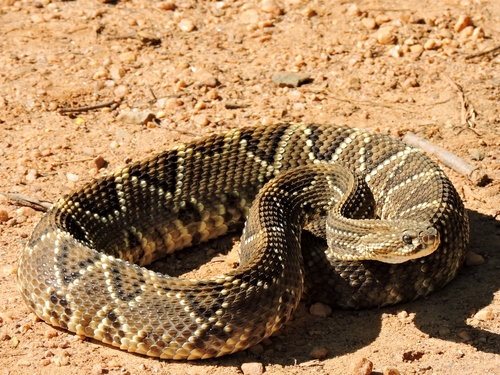
South American Rattlesnake
The South American rattlesnake (Crotalus durissus) captivates with its diamond-patterned scales and iconic rattle. Its potent venom is key in rodent control, balancing ecosystems across Central and South America. A master of adaptation, it thrives in varied habitats, from dry savannahs to lush forests.
10-25 years
Lifespan
Length: 1.49352 - 1.88976 m
Size
Brown, Grey, Black, Dark
Color
Low
Aggression
Least Concern
Conservation Status
Unknown
Population Trend
Characteristics
Crotalus durissus, commonly known as the South American rattlesnake, is found in diverse habitats across Central and South America. It is distinguished by its diamond-patterned skin and the iconic rattle at the tail. Notable for its potent venom, this snake plays a crucial role in controlling rodent populations.
Distribution Range of the South American Rattlesnake
Crotalus durissus, commonly known as the South American rattlesnake, is native to South America. Its geographical distribution includes countries such as Brazil, Argentina, Colombia, Venezuela, Paraguay, Bolivia, and Peru. It is primarily found in the central and northern parts of South America.
South American Rattlesnake's Habitat
Environmental Conditions
The typical habitat of Crotalus durissus consists of dry or xeric environments, including savannas, dry forests, and grasslands. These areas often have a seasonal climate, with distinct wet and dry periods.
Ecological Niche
Crotalus durissus occupies an ecological niche as a terrestrial predator feeding primarily on small mammals, birds, and occasionally reptiles. Its adaptations allow it to thrive in open, dry areas where it can effectively use its camouflage and ambush hunting techniques.
Copyright @ Nature Style Limited. All Rights Reserved.
 English
English